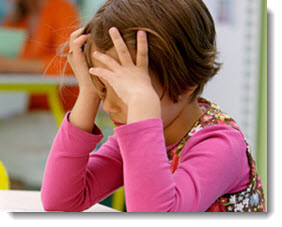“The road to hell is paved with good intentions,” remember this old saying? Sometimes we spot a serious problem, and with the best of intentions, discover that our solution wreaks as much havoc as the original problem itself.
The writers of DSM 5 have identified what they believe to be a very troublesome problem – the seemingly out-of-control overdiagnosis of childhood bipolar disorder which had led to a veritable proliferation of antipsychotic and mood-stabilizer medication use in pediatric populations.
 I honestly don’t know whether childhood bipolar disorder is overdiagnosed or underdiagnosed. Positions regarding the overdiagnosis vs. underdiagnosis conundrum depend on whom you ask, comparative studies, clinician biases and personal experiences with diagnosing this disorder.
I honestly don’t know whether childhood bipolar disorder is overdiagnosed or underdiagnosed. Positions regarding the overdiagnosis vs. underdiagnosis conundrum depend on whom you ask, comparative studies, clinician biases and personal experiences with diagnosing this disorder.
My concern relates to the proposed DSM solution or “fix,” if you will, for the aforementioned wild overdiagnosis problem. The proposal calls for a new diagnosis called “Temper Dysregulation Disorder with Dysphoria” and is meant to provide a less risky diagnosis for kids misdiagnosed as bipolar. This would be no more than a diagnostic dumping ground that will eventually prove to be a makeshift solution at best, with considerable risks.
The biggest problem with the proposal is that it is not restrictive enough. It throws a life preserver to kids misdiagnosed as bipolar, while opening the flood gates to the misdiagnosis of normal kids who happen to have temperament issues associated with the aches and pains of growing up. Ever effort should be made to distinguish “mental disorder” temper problems from those that are within the boundaries of normal, but difficult, tantrums associated with childhood development, otherwise any kid who acts out, regardless of the circumstances, could conceivably fit into Temper Dysregulation Disorder criteria.
This will not be easy to pull off. Because in the real world, at the clinic level, many diagnoses are made by primary care clinicians with little expertise in psychiatry, less time with each patient, and who are overly intolerant of unruly behavior.
What’s the solution? Given the limited state of current knowledge, it is foolhardy to regard Temper Dysregulation as an independent syndrome that can stand on its own. Adopting measures on how to assess symptom severity and adding certain specifiers could help, but the best solution for now is to do nothing.
If it’s true that pediatric bipolar disorder is wildly overdiagnosed, the NIMH and the FDA may have to step up educational campaigns geared to professionals and the general public regarding the significant risks associated with the overuse of second-generation antipsychotics and to recommend employing restraint in the diagnosis and treatment of kids with temperamental outbursts.
The good news is that childhood onset bipolar disorder is getting much more attention than it did just a decade ago. Rising interest will hopefully lead to more research funding, scientific discovery and resources dedicated to pediatric mental illness.





Leave A Comment
You must be logged in to post a comment.